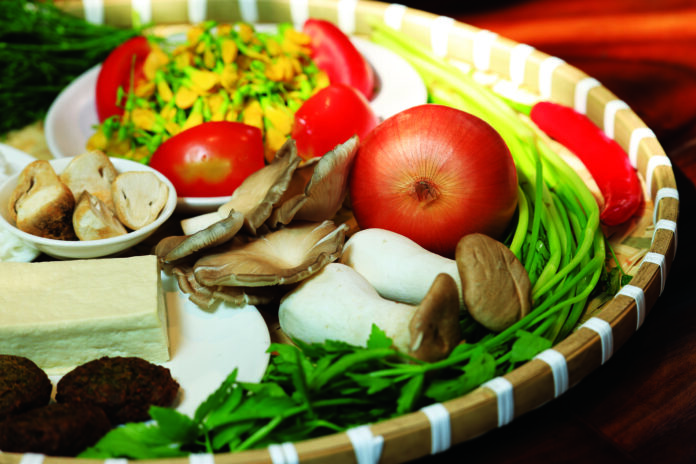Summer in the South is hot, sunny, and dry… often making people feeling tired. In such weather, homemakers tend to think of light, refreshing dishes to help their families beat the heat. Meat, seafood, and dairy are too “heavy”, so summer meals should be refreshing, light and heat-relieving. To address this issue, dishes made from plant-based ingredients, mushrooms, beans, etc., offer a perfect solution. The Chef from An Vegetarian Restaurant at 220 Pham Thai Buong street, Phu My Hung City Center, has introduced the following three refreshing summer dishes.
Sesbania Sesban Flower Salad
Sesbania Sesban flower is a common ingredient in many famous traditional dishes of the Western (Mekong Delta) people. With this flower, one can create many delicious and nutritious meals.
During the rainy season, the Sesbania Sesban plant grows along riverbanks, canals, or on the edges of abandoned rice fields, blooming with bright yellow flowers. Locals row boats to harvest the flowers for making pickles, salads, and various other dishes such as: Sesbania Sesban flower and shrimp salad, sour soup with henicorhynchus and Sesbania Sesban flowers, hotpot with henicorhynchus and Sesbania Sesban flowers, crispy pancakes with Sesbania Sesban flowers, etc.
The best time to harvest these flowers is in the afternoon when the flowers have just begun to bloom – this ensures a tastier and fresher taste.
Dishes made from Sesbania Sesban flowers are not too complicated, yet they deliver a very distinct flavor that few dishes can match. This special Southern flower is ideal for hot summer days when one wants light and refreshing meal to soothe the stomach. The Chef introduces a vegetarian Sesbania Sesban Flower Salad using natural and familiar ingredients: Sesbania Sesban flowers, water lilies, carrots, cucumber, dried tofu skin (used as imitation dried shrimp), bean sprouts, vegetarian fish sauce, sugar, pepper, fried leeks, peanuts and rice crackers.
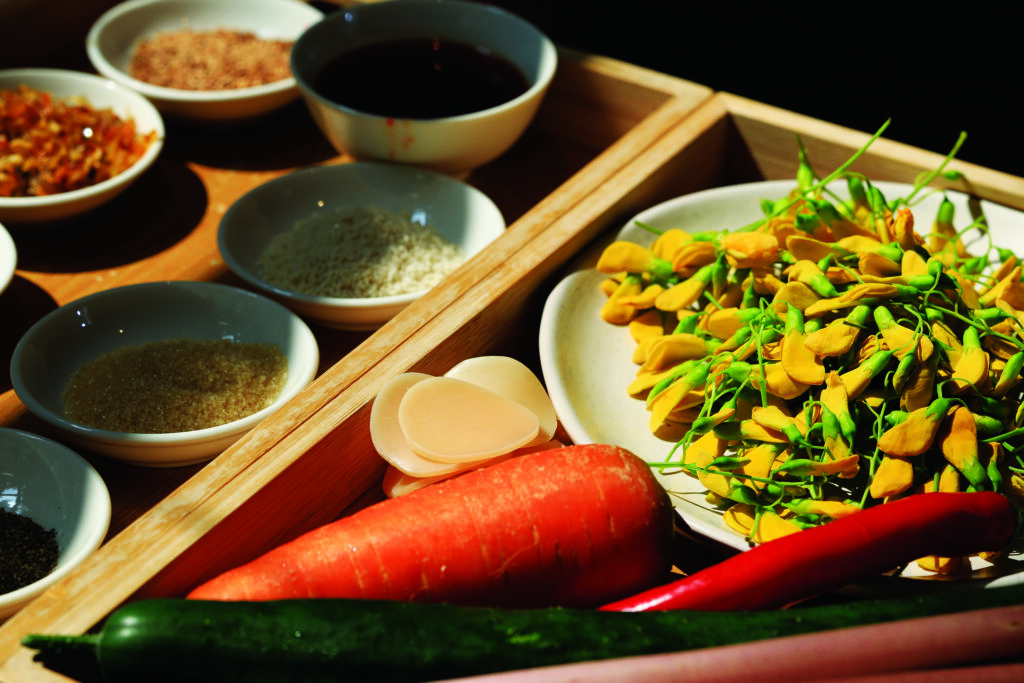


Mushroom & Dill “Rieu hotpot”
The name of this dish consists of two key words that seem worth clarifying. First, “Hotpot” (originating from the Cantonese pronunciation, Sino-Vietnamese reading: “lô”, meaning “stove”), also called “island”, is a popular dish originating from China, now beloved in many East Asian countries. It features a stove (heated by gas, charcoal, or electricity) that keeps a pot of broth boiling, surrounded by raw ingredients like meat, fish, eel, vegetables, mushrooms, seafood, etc. Diners dip the ingredients into the broth, wait for them to cook, and enjoy them while still hot. Hotpot is especially popular during winter to maintain the dish’s warmth.
The second word is “Riêu.” According to the Vietnamese dictionary, “Riêu” refers to a watery dish cooked with crab or fish, combined with sour elements and seasonings. Thus, the main ingredients for sour soup often include vegetables, various meats, or seafoods (such as fish, shrimp, crab, snails, clams, mussels, etc.), typically paired with a sour seasoning to create a deliciously tangy broth.
As such, “Riêu” also refers to watery dishes with a sour, refreshing taste, characteristic of northern region. Moreover, there’s “Bún riêu,” a dish that combines fresh rice noodles, crab paste, and a sour broth made from vinegar or tomatoes.
The “Mushroom and Dill Rieu Hot Pot” here based on the cooking styles mentioned above, with one key difference: it avoids animal-based ingredients and instead uses lighter, purer plant-based ones.
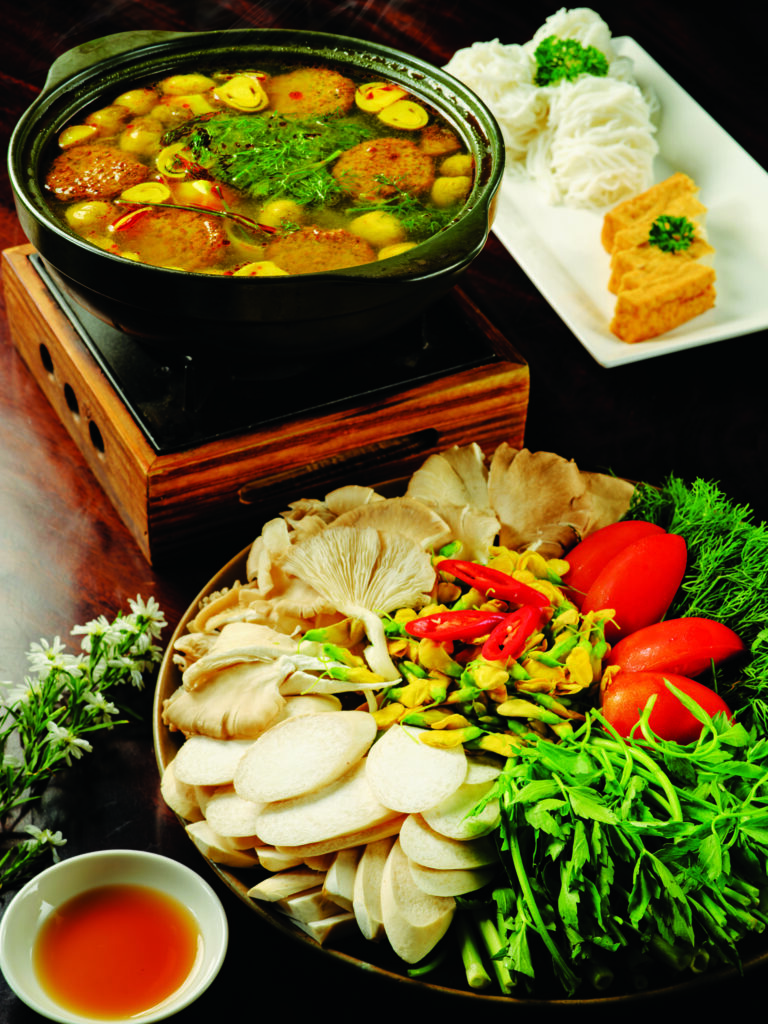
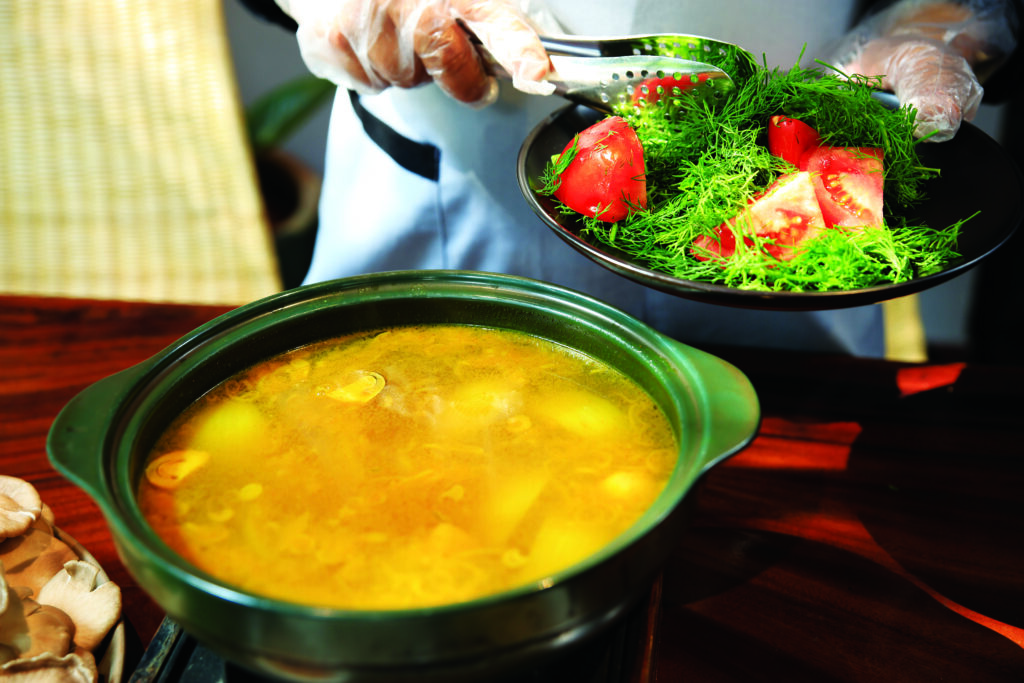
Braised Mushrooms With Green Banana & Tofu
This dish captures the rustic countryside flavor of Northern Region. Braised banana with tofu is associated with familiar “homegrown” ingredients and is a nostalgic taste for those far from home. This dish is a vegetarian version of the traditional “braised snails with banana and tofu” popular in the Red River Delta.
First, let’s understand the word “om” (braise). It refers to a slow cooking method using minimal water over low heat for a long period. This technique allows the ingredients to fully absorb flavors and become tender. Speaking in the rustic way, cooking with less water, using low heat to keep hot and slow cooking with the lid on to prevent evaporation.
The key souring ingredient in this dish is fermented rice (called “mẻ”). Differently with the other sour taste, “Mẻ” is sour, viscous and has a distinctive fermented rice aroma. The most important thing is that the consistency nature of “Mẻ” creates the unique broth characteristic of this dish.
Fermented rice, tofu, green bananas, mushrooms, perilla leaves, and lolot leaves all combine to create a tangy, sour and vicous broth.
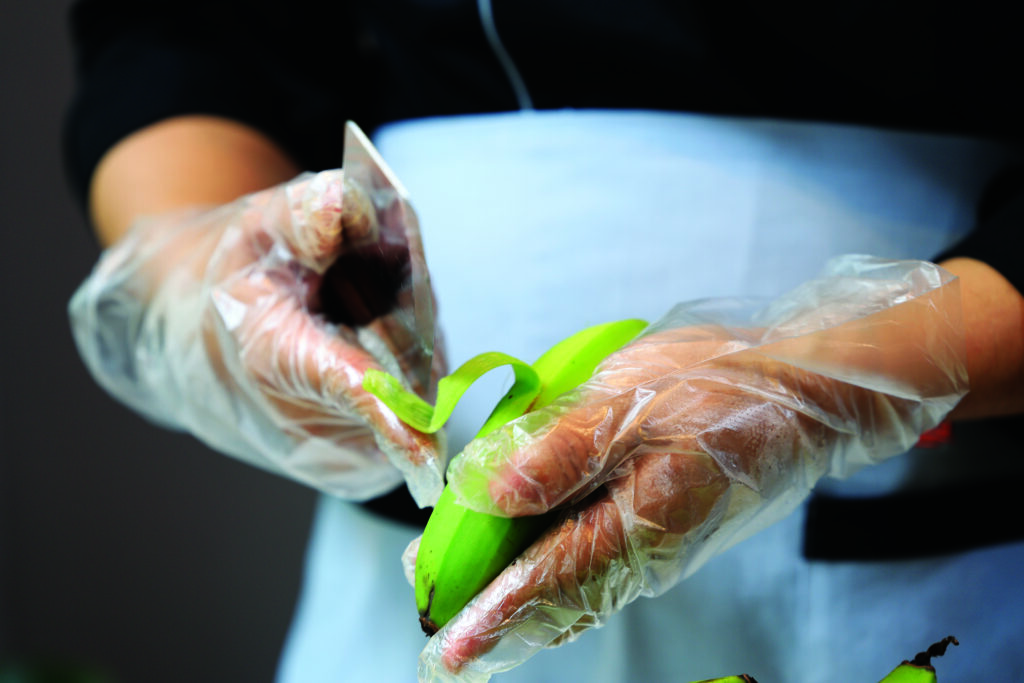
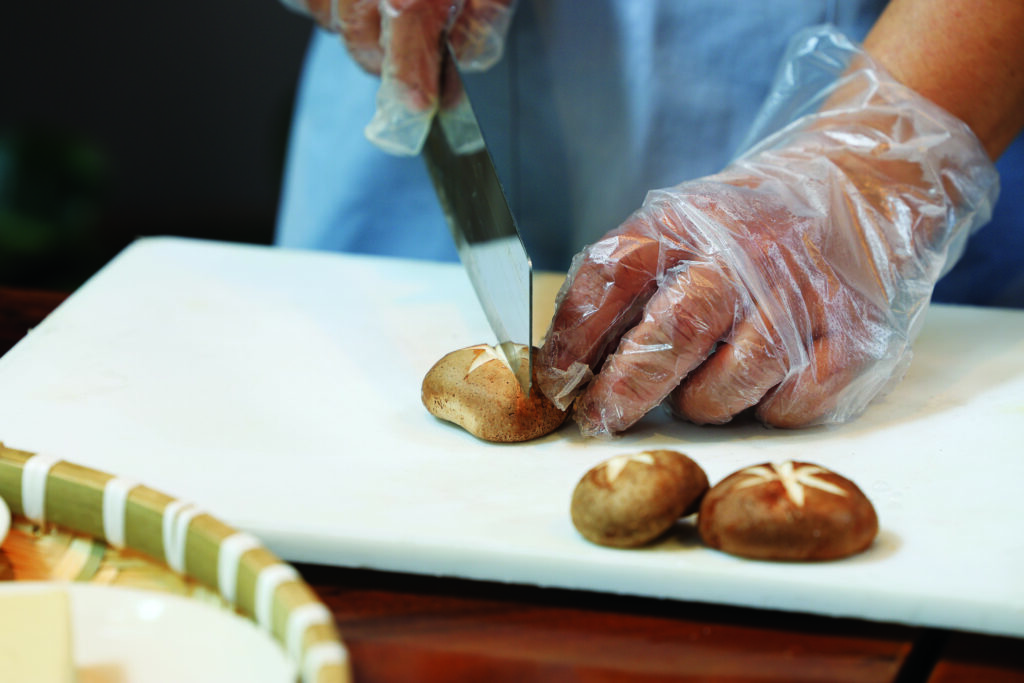
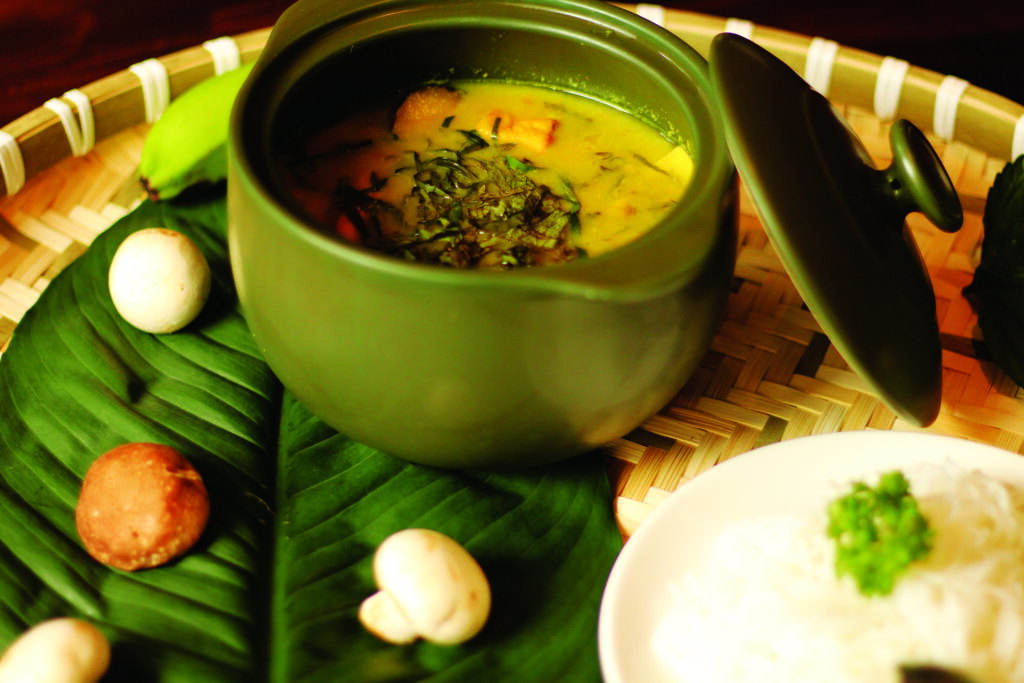
Source: An Vegetarian Restaurant




